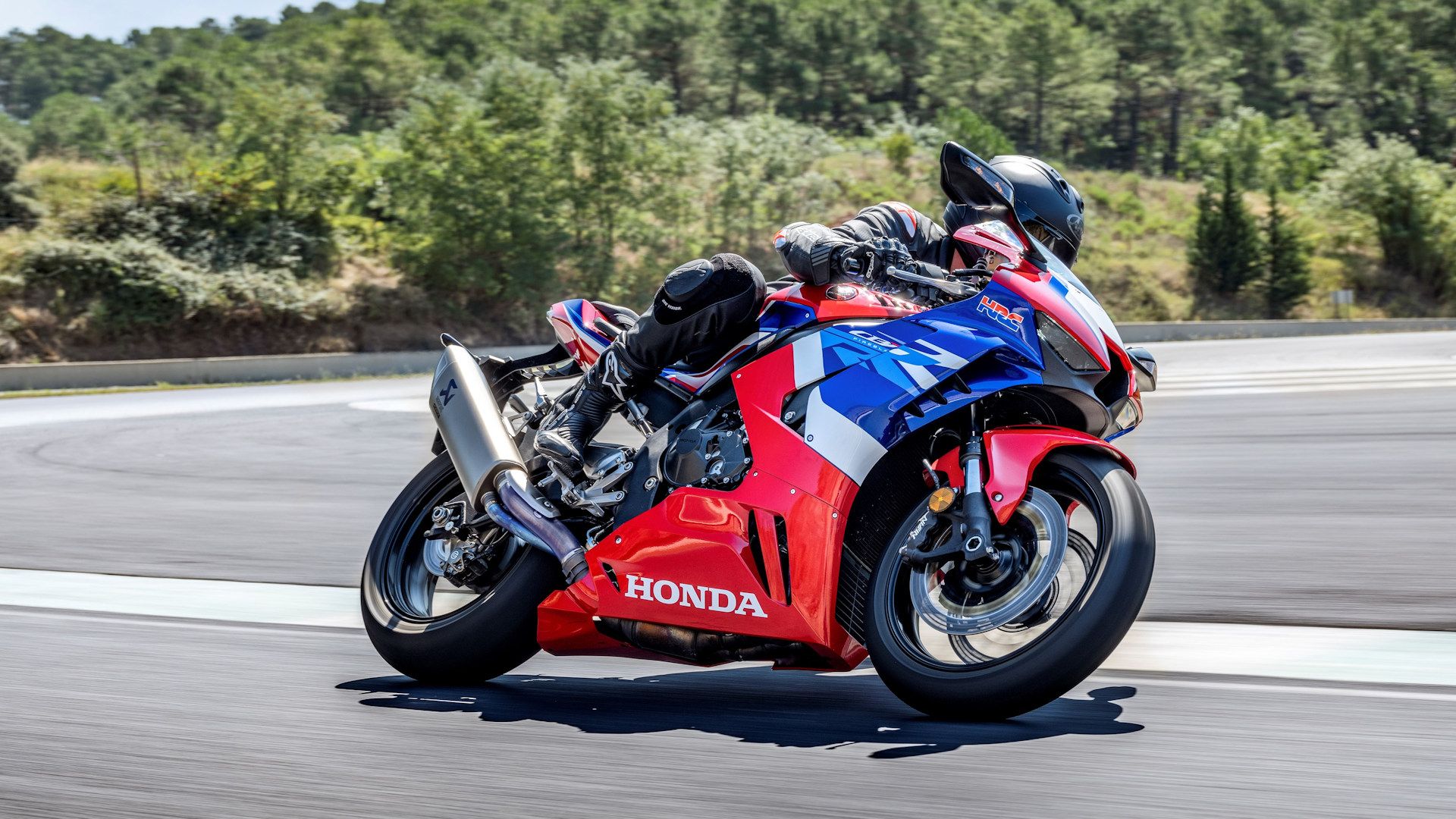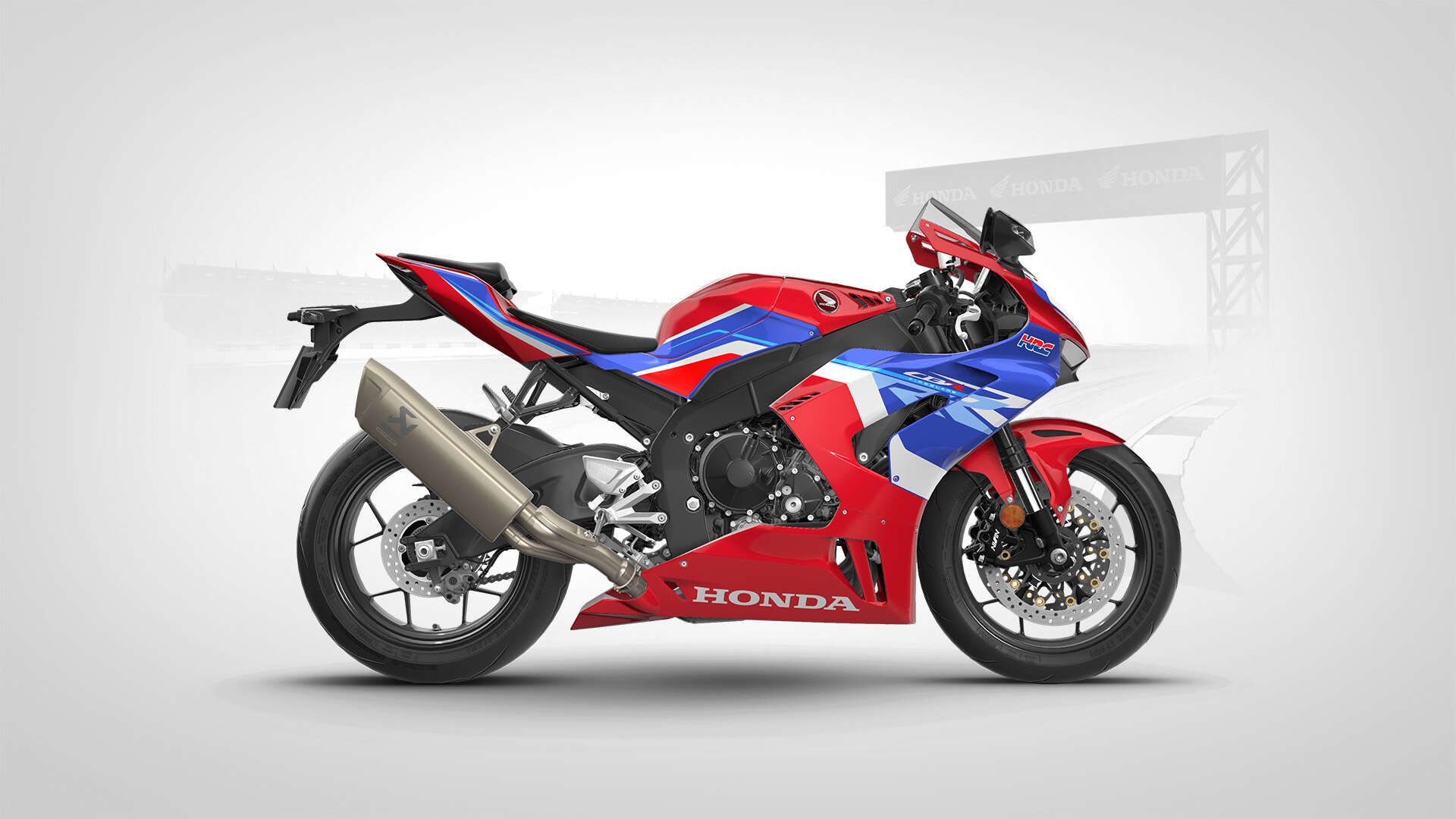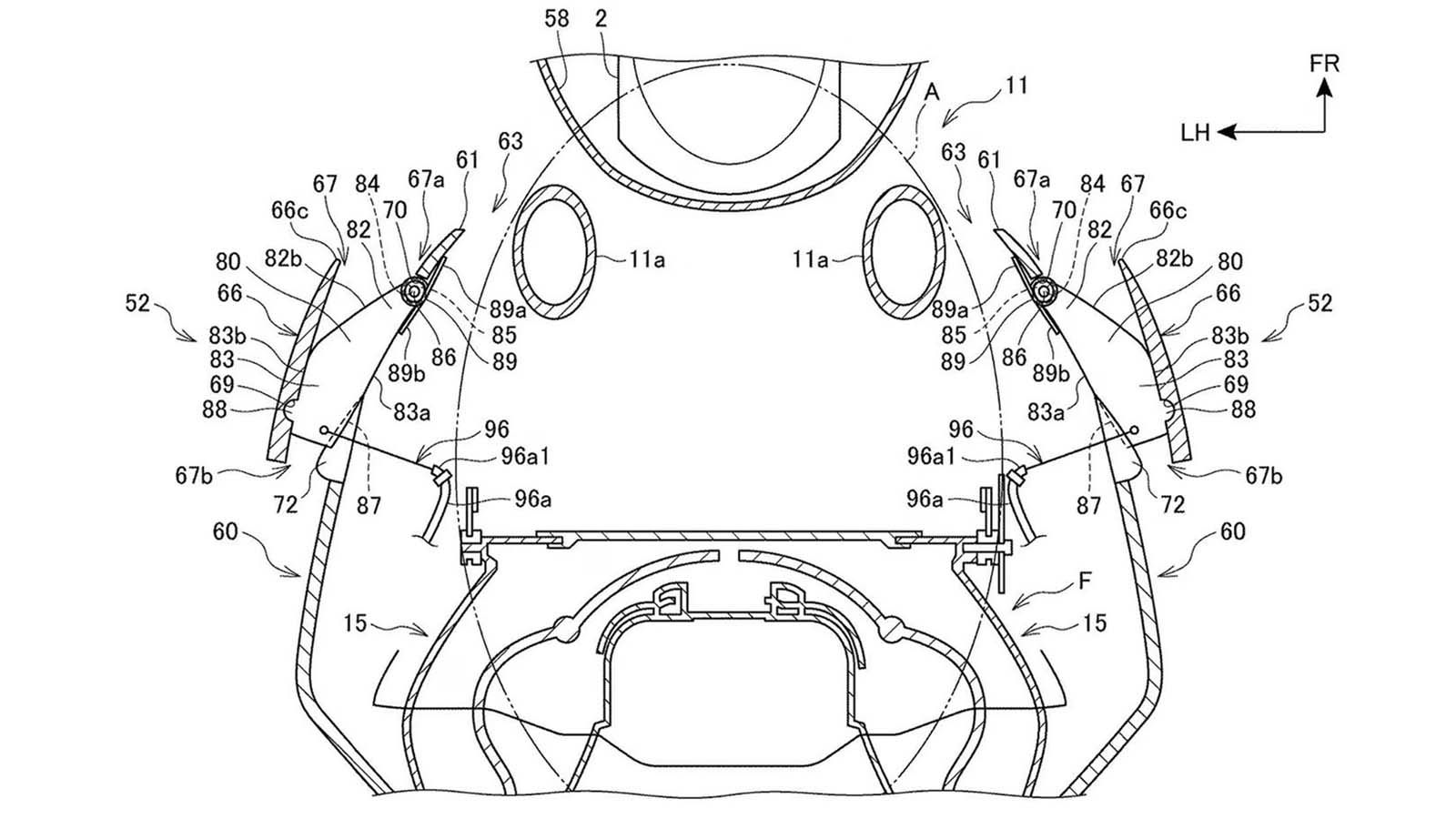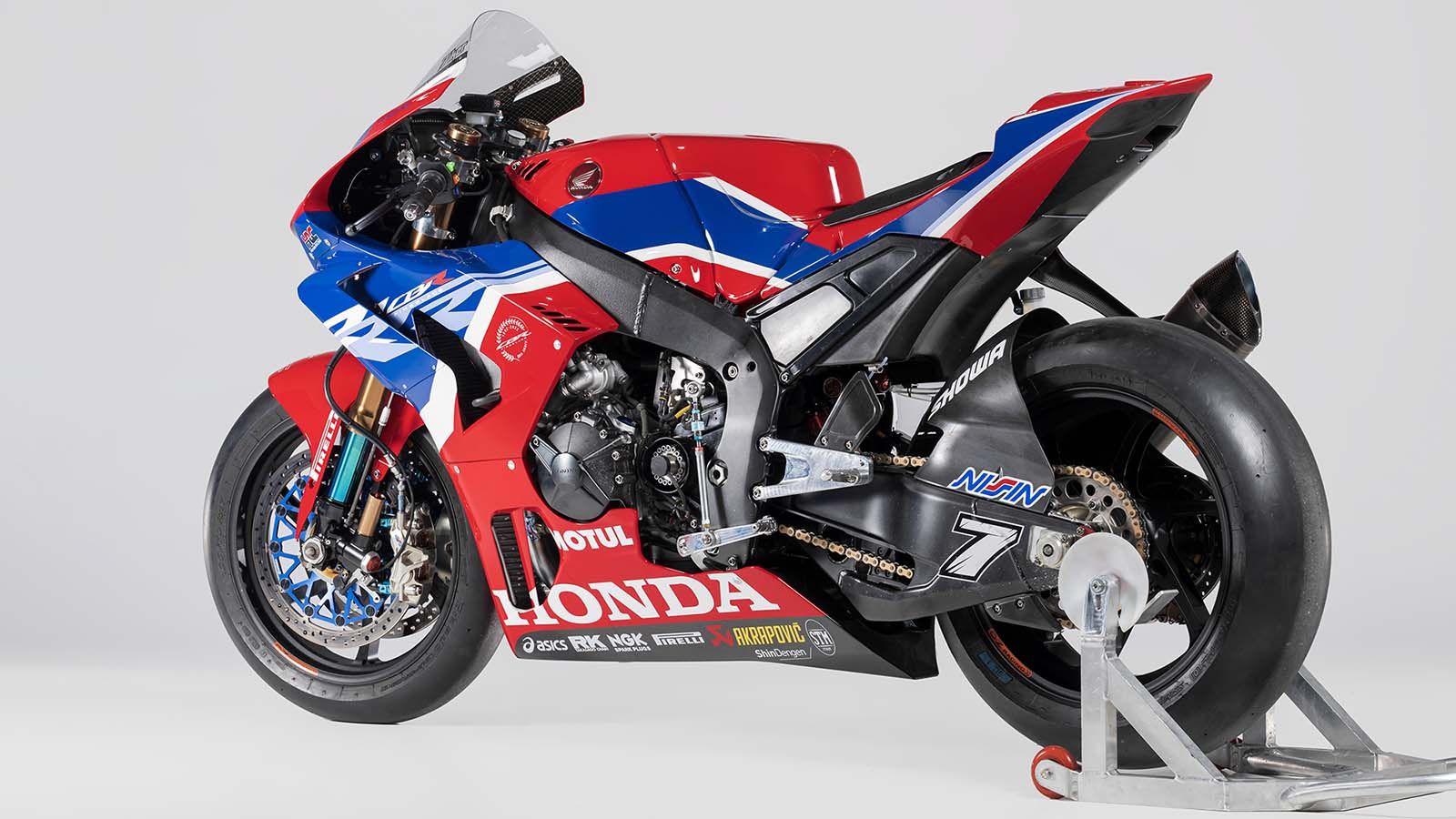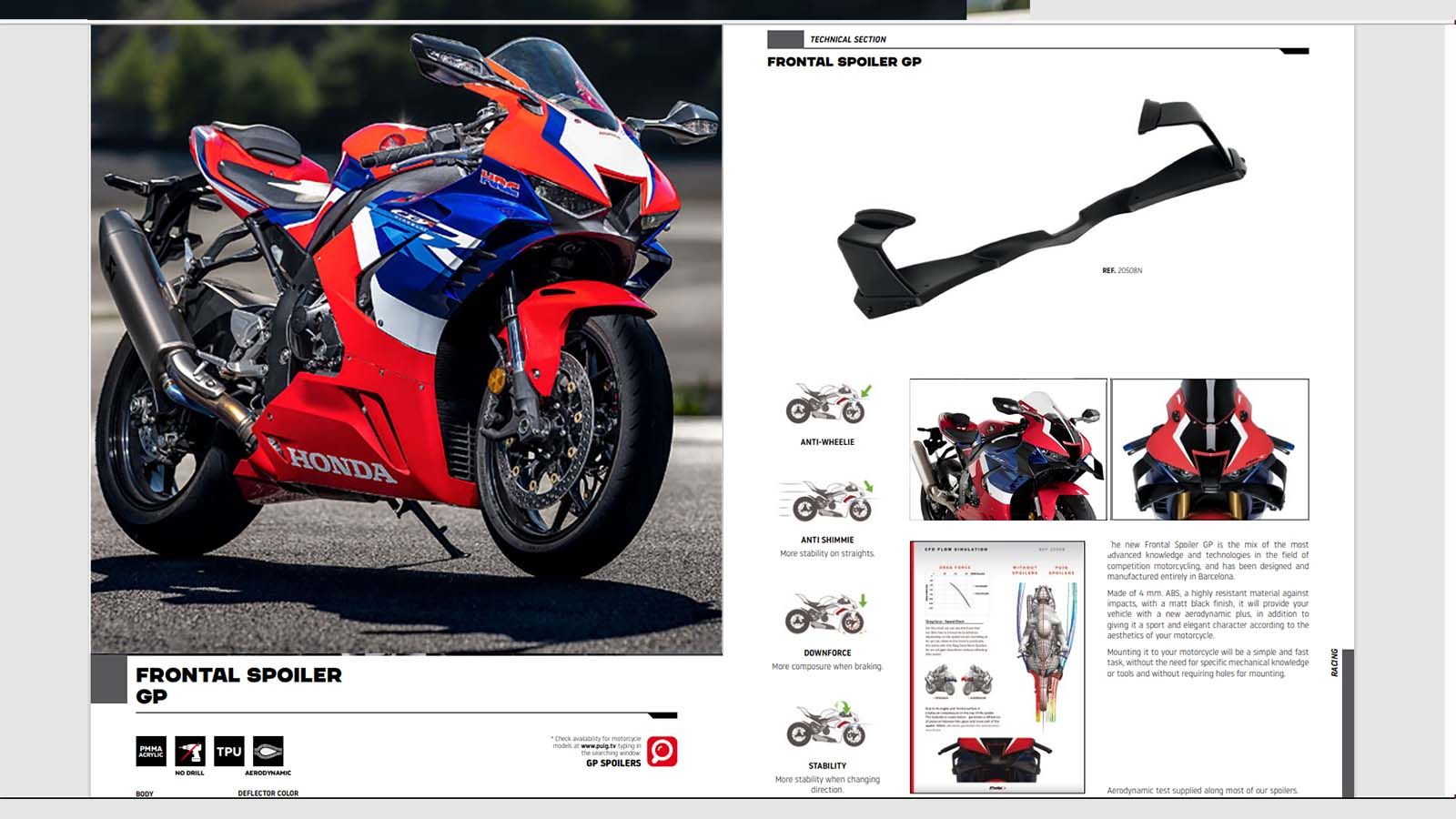Honda’s has come a long way since 1992 when they introduced the first generation 893cc CBR900RR. The model continued for 10 years seeing displacement increases to 918cc and then 954cc which had a completely redesigned body and frame. The seventh generation of the CBR1000RR also known as the FireBlade in some countries was introduced in 2004 and had been designed keeping the World Superbike Championship in mind.
Fast-forward to 2020, the new CBR1000RR-R FireBlade was introduced featuring an all new power plant built from the ground-up with an "R" thrown in to create a distinction from CBR1000RR. Developed by the same team responsible for the MotoGP series and with aerodynamic technology passed down from the RC213V, it shares the same over-square bore and stroke of 81mm and 48.5mm as that of the street-legal RC213V-S MotoGP replica. The European 1000cc version generates 214 horsepower at 14,500 rpm, while States side, though regulations de-tuned it to 186 horsepower (at 12,000 rpm), the CBR was a massive improvement over the outgoing 2019 model in many departments.
It featured fairing incorporated aerodynamic winglets, Showa 43mm Big Piston Forks (BPF) and a Balance Free Rear Cushion Light (BFRCLite) rear shock absorber offering complete adjustability. While its younger sibling, the Honda CBR1000RR-R SP gets a complete Brembo package in the braking department, the CBR1000RR-R gets radial mounted four piston Nissin front brake calipers that have new piston material and surface treatment to dissipate and manage heat, while maintaining lever feel. The rear braking is handled by the same Brembo monobloc caliper used on the RC213V-S.
Similarities To The RC213V
The MY2022 CBR RR-R elicited a new type approval with changes coming in the form of revisions to the wheelbase that increased by a fraction to 57.5 from 57.3 inches - attributed to the rear sprocket getting a trio of new teeth, up 43 from 40. The air-box and intake funnels were re-shaped to smooth out the flow of air while the intake ports had been revised to increase air-flow and the exhaust flow into the catalyzer - the catalyzer itself was also optimized.
The 2022 model engine has a compact short-stroke layout and continues to share the same bore and stroke of the RC213V. The Fireblade’s 1000cc, inline four-cylinder, semi-cam gear train engine was designed with technical assistance from HRC's MotoGP development program. In European form, the CBR1000RR-R generates 213.9 horsepower, down 0.7 horsepower from the previous model that generated 214.6. Peak torque figures have also changed on a miniscule level from 83.3 foot-pounds to 82.6 foot-pounds. The reduction is believed to stem from modifications to the catalytic converter that resides in the collector though there appears to be no visible changes in size.
The CBR1000RR-R benefits from MotoGP technology internally. The valve train is driven by a semi-cam gear train system that uses a timing gear on the crankshaft to drive the timing chain via the cam-idle gear (just above the timing gear), making the chain length shorter.
Most are familiar with DLC (Diamond Like Carbon) coating on high-end front forks, but the technology has made its way onto the camshaft lobes to reduce friction – just like on the RC213V-S. The MY2020 marked the first time the process was used on a mass production motorcycle and reduces valve train frictional losses by 35% as compared to non-DLC coated cam lobes.
AutoBy Magazine Provides The Clues
Coming to rumors surrounding the upcoming 2024 Honda CBR1000RR-R, speculations from AutoBy magazine in Japan are doing the rounds on what the new CBR may look like. It doesn’t appear much different from its 2022 counterpart in terms of design, but the tail looks angled and broader and the wings are larger too. The current 2022 CBR1000RR-R has three bi-plane styled winglets built into either sides of the fairing, and it will be interesting to see if these remain the same or not.
There has also been a lot of news doing the rounds on the internet about Honda’s intention to use active aerodynamics on its motorcycles after filing patents in 2019 – three were filed. Could this be the year we see the active hardware in use on the 2024 CBR1000RR-R? The image provided by AutoBy goes against this thought, but that shouldn’t be an issue for the inclusion of the technology by Honda on its road-going motorcycles if they should decide to implement. The technology uses servos and Bowden cables to operate the winglets built into the sides of the lower fairing that retract in and out, the main objective being to reduce drag. The patents do not reveal how they will operate, but it could be via speed-sensors and lean angle taken into account to deploy or close them, or it could be via manual intervention.
Its Association With The World Superbike Championship
As far as its relationship to the WSBK Championship is concerned, regulations stipulate that aerodynamic down-force spoilers or winglets can be utilized. However, they need to be homologated which would need to see the technology accommodated onto their street going counterparts first (whether active or static) wherever they are sold in the world, which is specifically Europe, Asia and North America. Lastly, WSBK rules also mention the non-use of active (moving part) technology which has been banned in Motogp. The FIM rules and regulations clearly states:
“For active or dynamic aerodynamic parts ONLY the standard homologated mechanism may be used. The range of movement must be the same as that used by the homologated road machine in normal use - not the mechanical maximum.”
What is also interesting is Puig develops and manufactures aftermarket frontal GP spoilers for a variety of motorcycles and their catalog shows a CBR1000RR with an externally fitted spoiler that looks almost identical to the one seen on Marc Marquez’s MotoGP RC213V motorcycle. Apparently, Puig has a technical partnership with HRC and the Repsol Honda MotoGP team, and says its extended winglets offer approximately 17 pounds of downforce on the front axle at 186 mph. They're on Marc's bike, so there's no reason why the WSBK race going FireBlade can't have them depending on regulations.
Either way, Honda needs all the luck they can get. Sadly, they haven’t taken the winner's podium since the late Nicky Hayden last took victory in Race 2 at the World Superbike Championship at the Sepang International Circuit in Malaysia way back in 2016.
In terms of power the 2022 CBR1000RR-R is pretty much there, but with emission regulations getting stricter, it remains to be seen if Honda will be able to extract a few more horsepower for Model Year 2024. Kawasaki has managed in the past with the 2016 ZX-10R when the catalytic converter was at least 2.5 times bigger than its predecessor in 2015.

